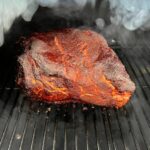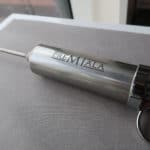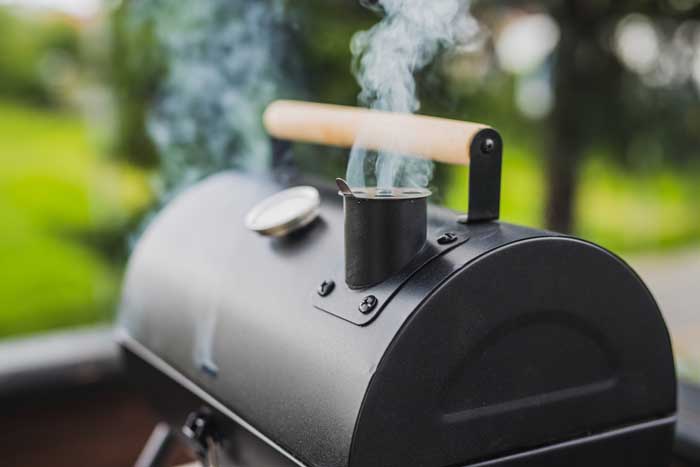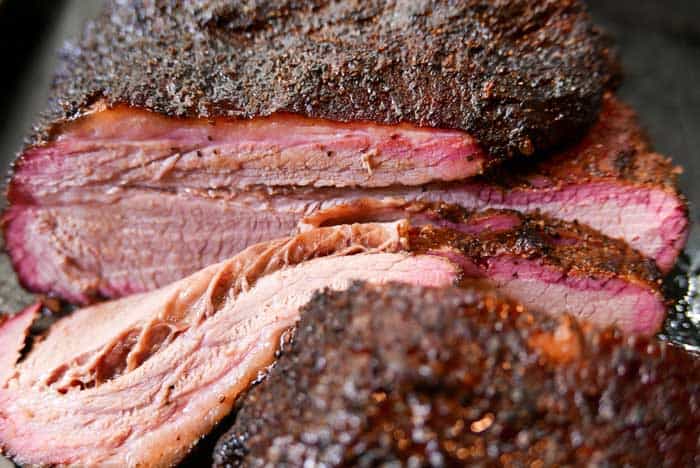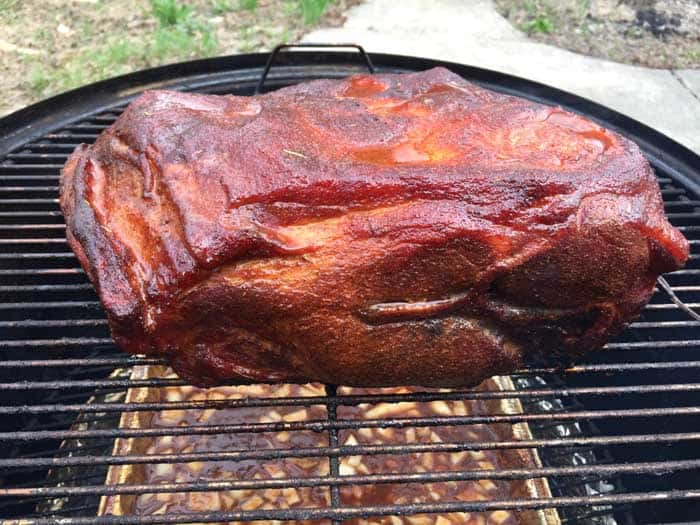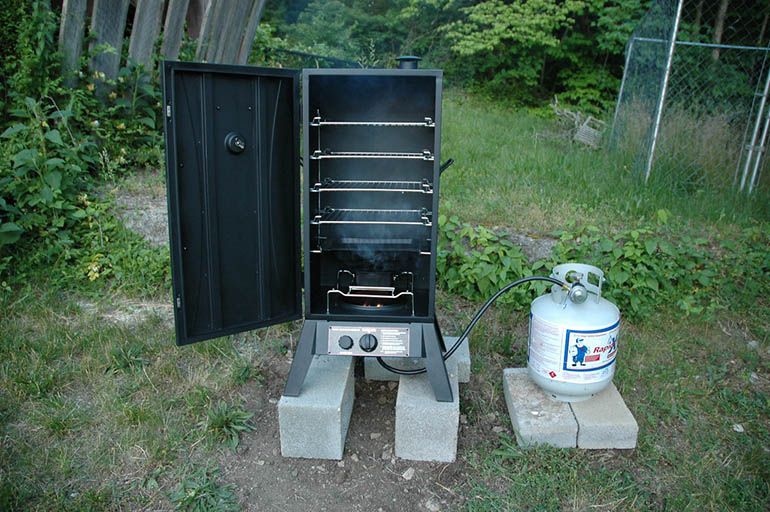Injecting marinade into smoked meat is the best way to infuse your food with intense flavors. Discover how to inject meat for smoking today.
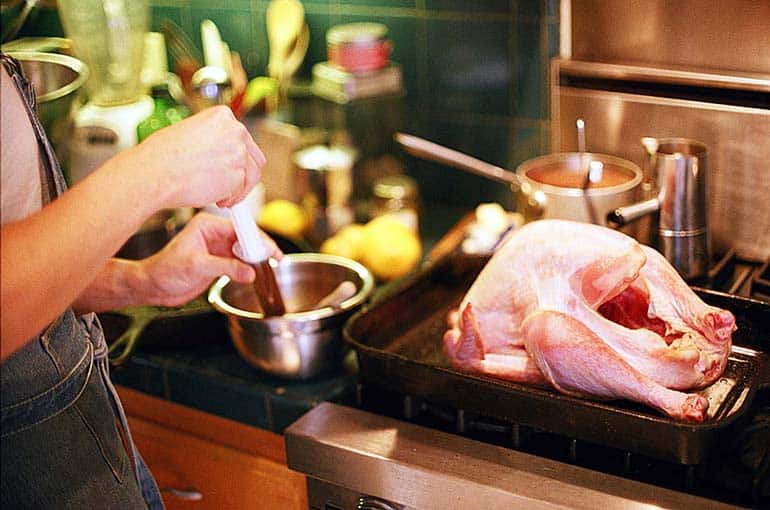
Injecting meat with marinade before barbecue smoking isn’t always necessary, but it can be the fine line between meat being dry and bland, or juicy and succulent. There’s a good reason why competition-level BBQ pitmasters use the technique. It enhances meat flavor and texture, and separates seasoned pros from backyard cooking amateurs.
Marinating adds a beautiful layer of intense flavor to chicken, turkey, pork, and beef brisket. Ever since I started using the technique for smoking meat, I haven’t looked back.
So if injecting marinade for BBQ smoking is something you haven’t tried before then I urge you to give it a go. Discover how and when to do it with our injection marinade guide.
Why inject meat before smoking?
Meat injecting ensures better coverage during meat preparation than traditional marinating by soaking.
While traditional marinating does a good job of coating your ingredients in flavor, it only breaks through meat’s outer layers therefore only providing a few millimeters of flavor. No matter how long you leave marinade to soak for, it can only penetrate so far.
The same is true for BBQ rubs and glazes, which are more limited as they can’t permeate the outer layer of your meat as effectively.
Then there’s brining. Wet and dry brines are fantastic preparation methods for ensuring moisture retention for barbecue smoked meats. However, neither method can provide the amount of flavor that injecting marinade can. They also take far longer to do, usually needing 1 hour per pound of meat. This means you need to leave your food to brine overnight for it to do its magic.
Injecting with marinade gives us full coverage, permeating the very inner layers of our meat, while only needing minutes to do it. All while ensuring the same levels of moisture and flavor that any other method would.
What are the best types of meat to inject?
The best barbecue smoked meats to inject with marinade are:
- Turkey
- Beef Brisket
- Boston Butt
- Wild Boar
- Pork Shoulder
- Pork Tenderloin
- Lamb Shoulder
- Lamb Leg
- Chicken
- Hams
I’ve covered many of these before in my guide to the best meats to smoke, so check that out for a more in-depth guide. The guide also provides crucial information on the times and temperatures that you need to follow, as well as suggested woods to smoke them with.
You might have to experiment a bit, and a lot will depend on your personal preference. Marinades are best injected into large meats that are naturally prone to turning dry. Therefore, fattier meats like beef or pork don’t need it, although can still enhance their flavor. The best work is done when we pack moisture and flavor into chicken, turkey, and lean pork cuts like tenderloin.
What to inject meat with before smoking
Everyone has their own go-to recipes and many people are secretive about what marinades they use. The best marinades however are often the simplest. Despite what you might hear, a lot of barbecue smoking is simple and marinades are no different.
For example, a lot of the best marinade recipes for injecting into turkey or chicken contain salt, water, garlic, Worcestershire sauce, and a mix of herbs.
Sure, different recipes will vary, but the base of many of them won’t deviate too much from these base ingredients.
For an inspiring list of some of the best to try out, check out my guide to the best turkey and chicken injection recipes.
Whichever you choose, just be sure to keep a note of ratios and measurements. If you go overboard with anything, particularly salt or herbs, then you will risk overpowering the meat. Don’t forget that your meat is the star of the show. Don’t let it be overshadowed.
If you use any herbs, be sure to grind them up before mixing them into your marinade. Try to achieve a fine powder or paste-like consistency.
Always check that your injector needle will accommodate the consistency of marinade that you’re using. If your marinade is on the thick or chunky size, then you will need an injector hole that can accommodate this.
I use a Premiala injector, which comes with three different needle sizes for all different kinds of marinades. I recommend getting something similar if you don’t have one already.
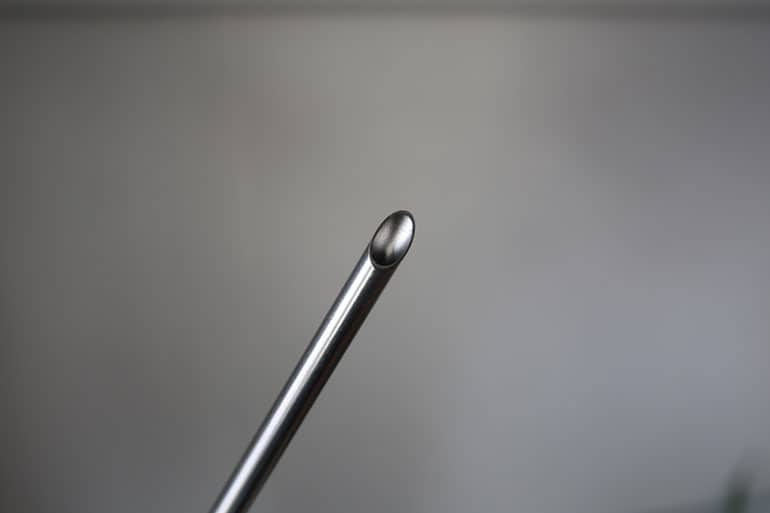
How to inject meat with marinade
This entire process is pretty straightforward and simple, but to make sure you’re clear on everything before heading into it, here’s my step-by-step guide on exactly how to inject meat. Follow this and you’ll be a master in no time.
Choose the right needle
Marinades will vary in thickness due to the ingredients they contain, so it’s important you opt for the right needle to use on it. If you choose one that’s too narrow then you won’t be able to squeeze your marinade out, while if it’s too wide then you won’t be able to apply adequate pressure on it to direct it into the deeper reaches of your meat’s flesh.
Not only do you need to be aware of the hole size at the end of your injector’s needle, but also of holes along the side of the needle. Needles with holes running along it are perfect for larger cuts of meat, as it allows you to easily apply marinade across different layers of the meat. Meanwhile, you don’t need this for thinner cuts of meat.
If your solution is thick then you’ll be forced to choose the single hole with a large opening, as needles with holes running along them won’t be wide enough to accommodate thicker solutions.
In most cases, needles are easily swapper in and out by unscrewing them at their base.
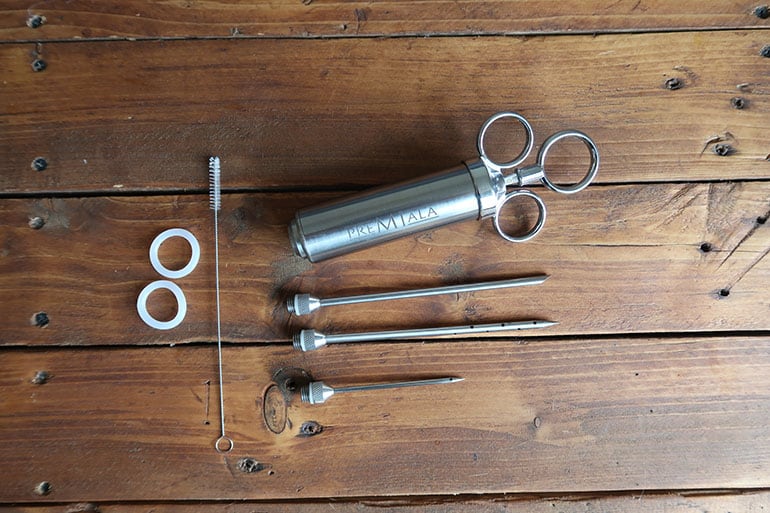
Pay attention to what’s in your marinade. If it’s thick in consistency, or if it contains large chunks of garlic or herbs, then go thick needle. If it’s much more watery, then go thin.
Prepare your injector
There are drawbacks to cheaper injectors, including the fast wear and tear of plastic parts, and the difficulty of getting rid of bacteria or moisture.
More high-end models tend to be entirely, or at least mostly, made of stainless steel. While this can make them feel more heavy-duty their major advantage is that stainless steel is extremely durable and easy to clean. This makes them far cleaner and safer to use.
Clean your food injector thoroughly prior to use. This includes making sure that its liquid chamber is free of any previous marinade or brine solution, and ensuring that its needle is clear of leftover food.
Have a container ready to pour your marinade into, as it’ll be easier to extract it from this using your injector than out a pot of bag.
Prepare your injecting marinade
Whichever marinade your choose to use, prepare and store it in a plastic container.
For large types of meat, you’ll need at least 2 or 3 cups’ worth of marinade. However, you will need to create at least double that so that you can fill your injector comfortably.
Try to stir or shake it before extracting into your needle to ensure that the ingredients are well mixed in, and haven’t either sunk to the bottom or floated to the top of the mix.
Fill injector with marinade
Dip the needle end of the injector into your marinade, and pull the plunger back all the way to extract it. If your syringe is clear or has a window then you should be able to see the chamber fill up.
If your needle has holes then you will need to adjust the angle at which you extract the marinade accordingly. This can be a little tough, and might require you to create more solution so that you can submerge the needle enough to be able to draw in the right amount of liquid.
Target areas to inject
To guarantee the best coverage, you will need to inject the marinade uniformly across the meat, also ensuring that you do the same in terms of depth.
I try to inject about a small amount every half-inch across the meat’s surface, both close to the surface and about one inch deep.
Don’t just do this on the top surface of the meat, but also at the bottom and the sides. Doing this will make sure that we are also getting between the sheets of muscle in the meat, which will help the marinade work its way best through the flesh.
Start injecting
It can be easy to go too hard and erratic here, so try your best to apply the marinade uniformly.
When pushing down on the plunger of the injector, try to do it steadily and only allow a little amount to inject the meat one each push.
Try not to release the liquid too close to the surface of the meat, as the liquid will simply roll off and go to waste.
Here’s a video on the perfect way to do it:
If your needle has holes along its side, then ensure that all of these are inserted into the meat. If even just the top hole is exposed then most of, if not all, of the marinade will escape through this hole.
Ensure even coverage
Apply the needle to every hole that you will have mapped across and through the meat, and remember to do the same on all sides of the meat, including the bottom.
And that’s it. It’s a really simple step in meat preparation and will give you amazing results. That first step can be daunting however, but after one run through I’m sure you’ll have mastered it in no time.
FAQ
Here’s a quick FAQ to help you with any other burning questions you might have.
What’s the best meat injector to use?
I’ve written before about what I think is the best meat injector, and in that review I noted that a lot of the best ones are made with stainless steel to ensure not only durability but also good hygiene and food safety. They’re easy to clean, and don’t allow bacteria to form on them anywhere near as easily as plastic models do.
Check out my full Premiala meat injector review
The best injectors are also easy to dismantle so that they can be washed thoroughly, but also so that you can swap the needles depending on the solution that you’re using.
My go-to has been the Premiala for a few months now. It’s pretty intimidating in the aesthetic department, but it’s so reliable that I’m not sure I could go back to anything else. It comes with three sets of removable needles, allowing you to use a variety of marinades.
How do you clean meat injectors?
Like with any kind of kitchen or cooking equipment, you should clean your injector after every use (source).
Not all injectors are dishwasher-friendly, so I’m going to lay out a more manual approach here that should suit most, if not all, injectors.
Fill a wash bowl with hot soapy water. With the injector still completely intact, fill its chamber by extracting soapy water into it, much like you would with marinade.
Push the plunger to push out the soapy water. Repeat three or four times.
Take the injector apart by unscrewing its needle and pull out its plunger. Carefully remove any rubber rings in the mechanism and leave to one side (these are really easy to lose so be careful!) Rinse the inside and outside of the injector.
Check the inside of the chamber and needle to make sure no bits of food or marinade are left. If there are any remaining parts, then I recommend submerging the affected parts in hot soapy water and using a brush to scrub them. Rinse down afterwards and leave to dry.
Once completely dry, apply a thin layer of cooking oil to the inside of the chamber before assembling the rest of the injector (including the rubber rings). This layer of oil will help lubricate the inside of the chamber for the plunger to glide down. Some injectors are incredibly stubborn otherwise, so this just helps ease of use.

